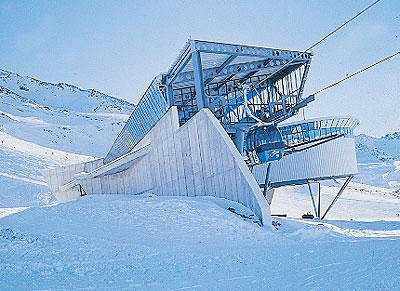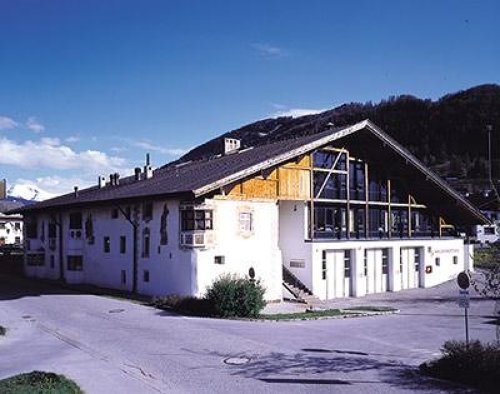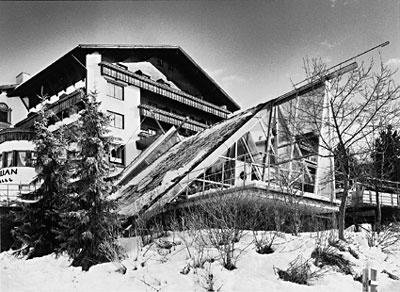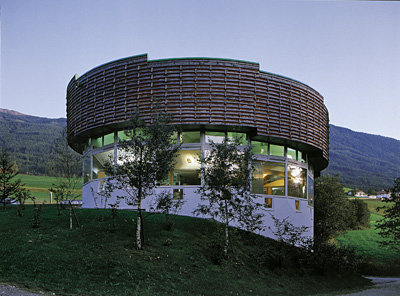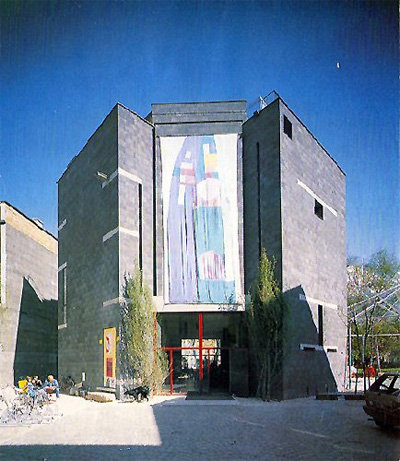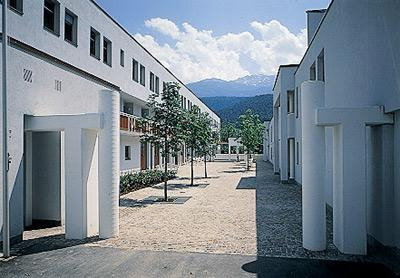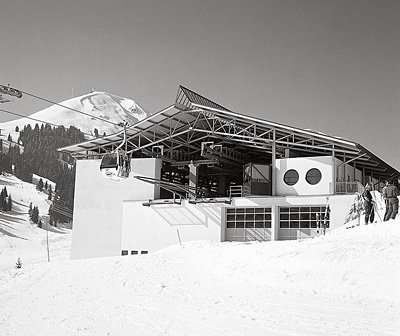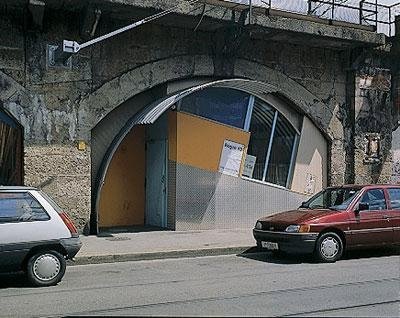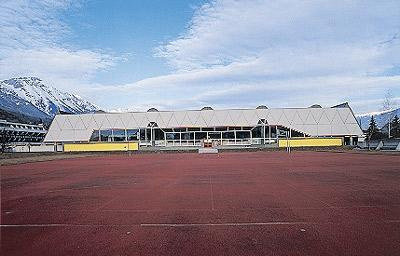Festkogelbahn (lift stations)
Architecture: Peter Thurner (1989) Builder-owner: Liftgesellschaft Obergurgl GmbH Open to the public: during hours of operation
Situated at the entrance to Obergurgl, running up to the Festkogel alpine hut, – the location of the valley station was also influenced by the architects – is one of the first new generation cable lifts. To express the architectural topical excitement between technology and nature, Peter Thurner and Antonius Lanzinger developed an autonomous sculpture as a massive exposed concrete base with a glass and sheet metal roof placed on top.


